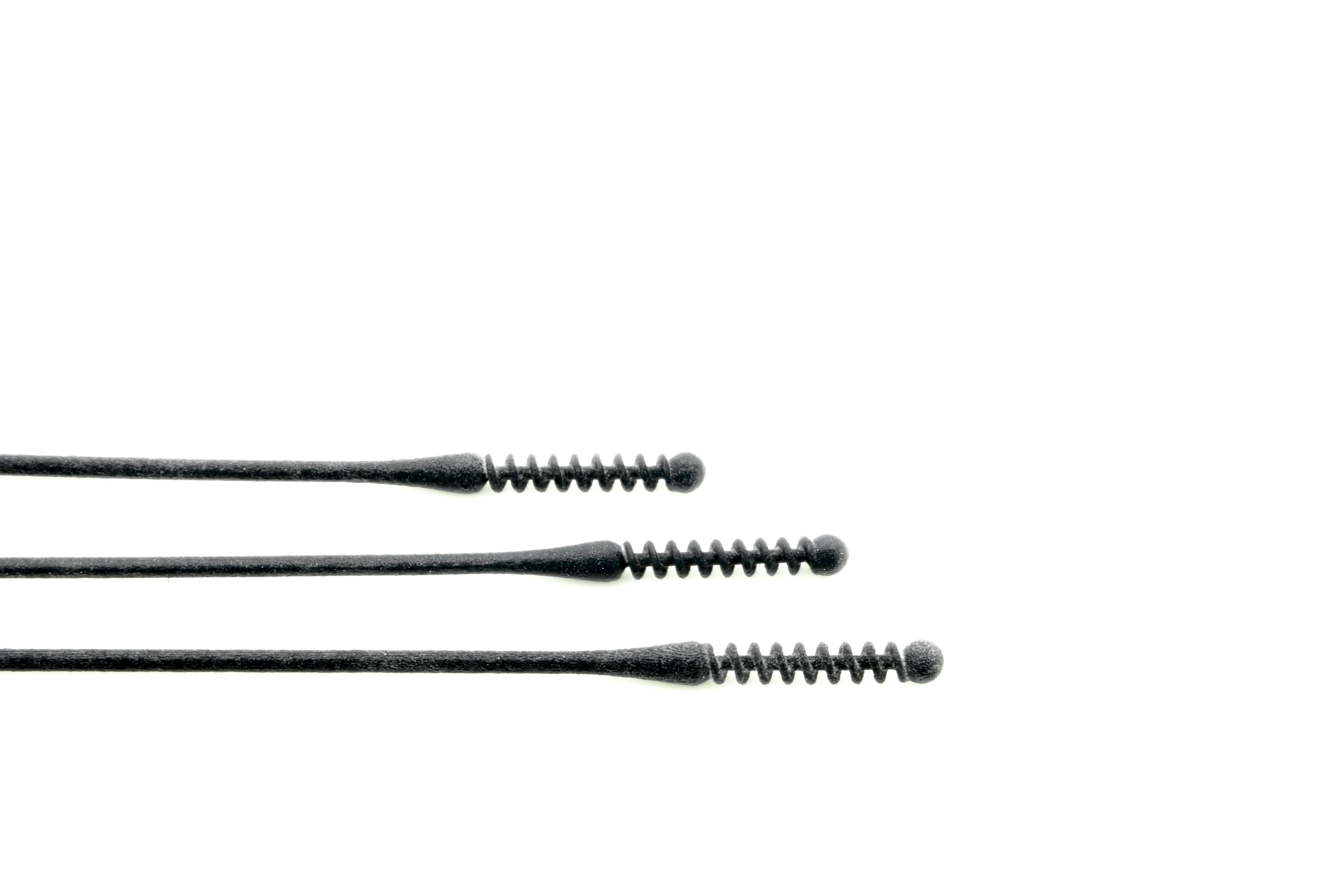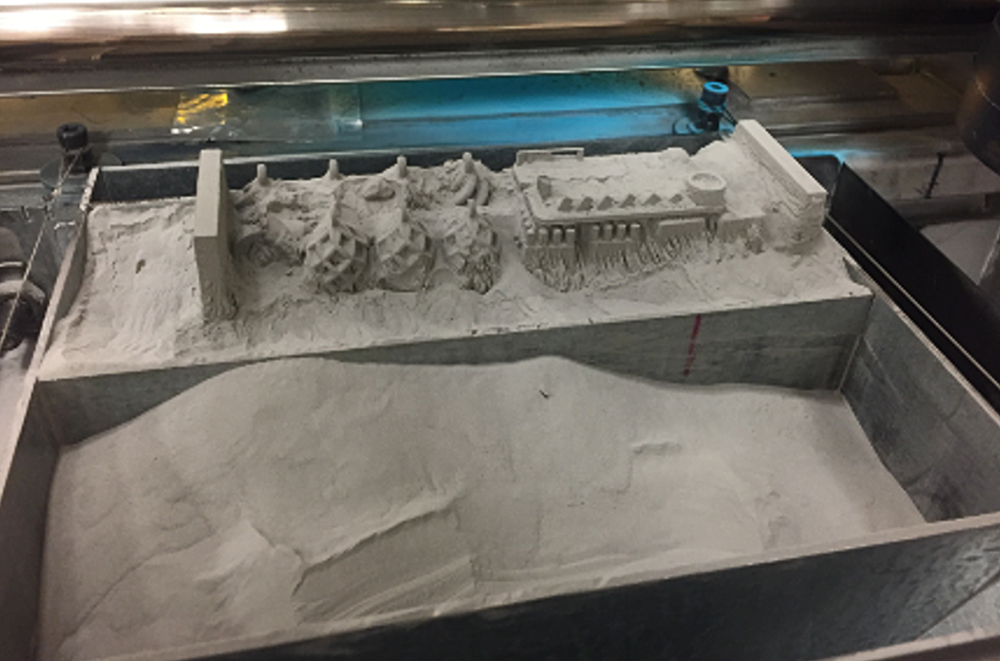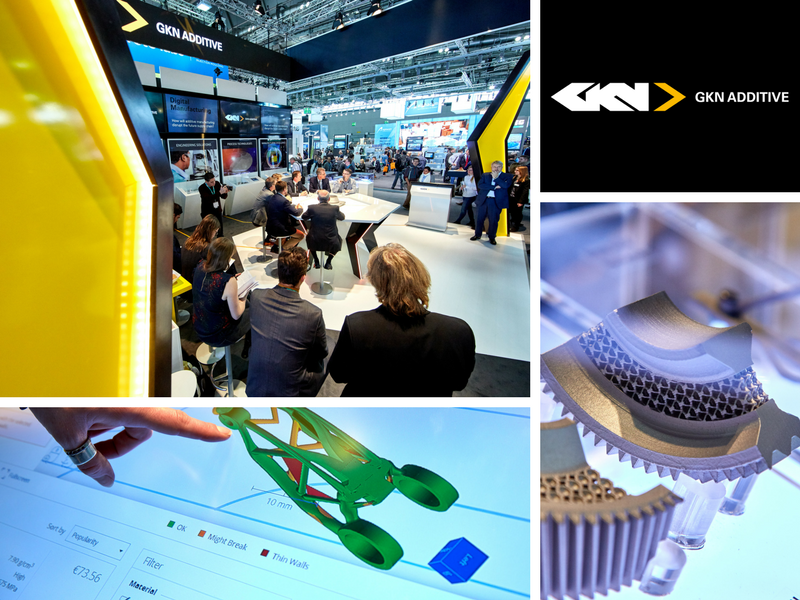Read time: 4 mins
Date posted: Jul 2020
Theme: Additive Manufacturing
Beyond simulation: 3D printed vs traditional copper induction coils
Copper 3D printing has a long history of only being considered as a capability of the future, but today we are seeing applicable benefits as we work with printable copper alloys like CuCr1Zr. At GKN Powder Metallurgy, we are moving beyond the demonstration phase to showcase the capabilities of 3D printed copper components. Additively manufactured copper induction coils made from CuCr1Zr have a proven breadth of superior results compared to its conventionally produced counterparts.
Copper induction coils are critical components for many industries and must meet stringent performance requirements for conductivity, weldability, energy consumption and more. In a recent blog post, we conducted an induction hardening simulation comparing a 3D printed induction coil made from our alloy and a conventional coil bended from pure copper. In that experiment, both induction coils had the same boundary conditions, magnetic excitation and frequency of simulation. The results of this simulation, conducted in house by GKN Additive, demonstrated that the 3D printed coil was superior to the traditional version.
In this article, we will review a more recent experiment conducted by a customer in the industrial sector. In the tests, a major automotive supplier compared two types of induction coils that were produced using both 3D printing and traditional methods. In the first experiment, we 3D printed a standard ring induction coil to match a coil that was made using conventional grinding and soldering methods. In the second test, we additively manufactured a hairpin coil with small dimensions to compare it to a conventional hairpin coil.
Analyzing the geometric quality of induction coils
From simply looking at the 3D printed copper coils next to the standard induction coils, you can identify clear differences. The 3D printed ring induction coil and hairpin coil both showcased superior dimensional fidelity and tolerances compared to the conventional coils, while also eliminating the need for any soldering.
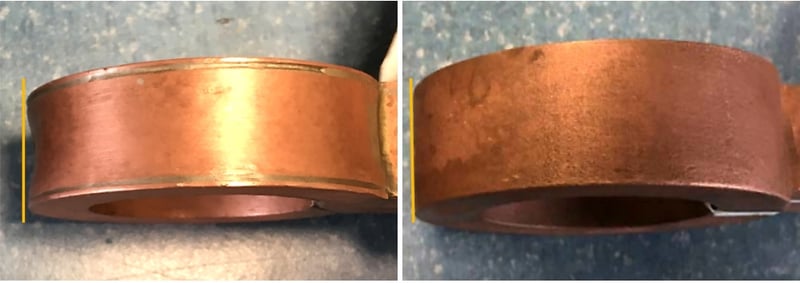 Side view comparison of the coil quality: The left picture shows the conventionally produced coil (high deviation from the straight shape), the right picture shows the 3D-printed coil
Side view comparison of the coil quality: The left picture shows the conventionally produced coil (high deviation from the straight shape), the right picture shows the 3D-printed coil
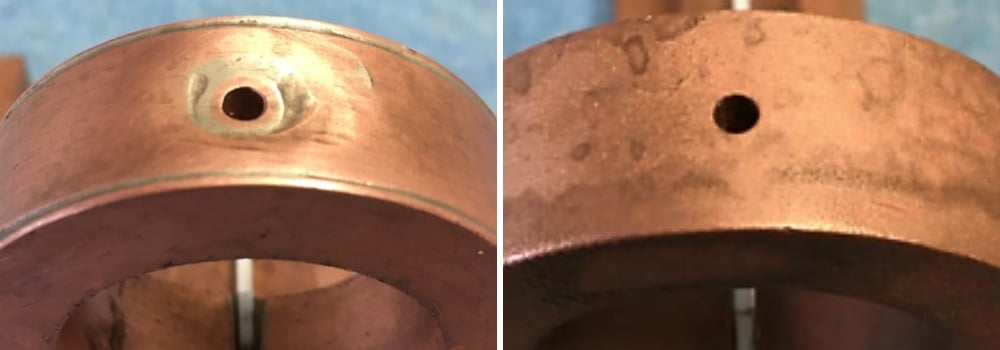 Front view comparison of the coil quality: The left picture shows the conventionally produced coil, the right picture shows the 3D-printed coil
Front view comparison of the coil quality: The left picture shows the conventionally produced coil, the right picture shows the 3D-printed coil
Efficient water flow performance
In terms of performance, the higher dimensional accuracy of the 3D printed copper coils results in improved water flow. For the ring coil, the water flow performance slightly enhanced compared to the conventional coil (26-27L/min). For the hairpin coil, we saw impressive improvements: Water flow was increased from 2L/min with the conventional hairpin coil to 6-7L/min with the 3D printed coil.
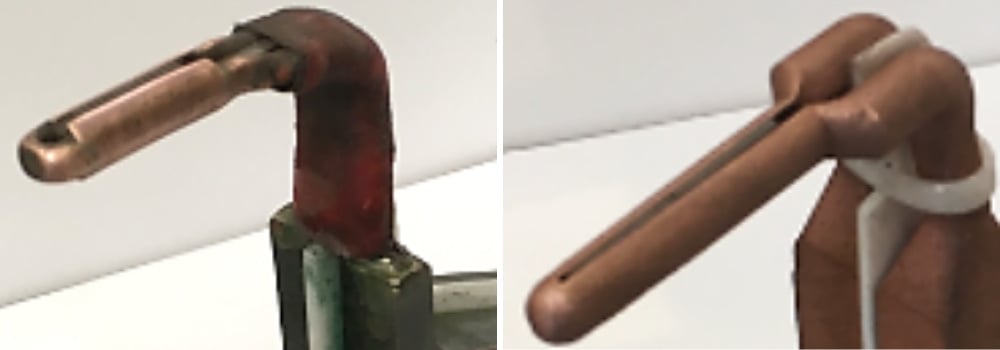 Hairpin coil with a diameter of 8 mm: The left picture shows the onventionally produced coil with max water flow of 2L/min, the right picture the 3D-printed coil with superior water flow of 7L/min
Hairpin coil with a diameter of 8 mm: The left picture shows the onventionally produced coil with max water flow of 2L/min, the right picture the 3D-printed coil with superior water flow of 7L/min
Hairpin coils are notoriously challenging to produce using traditional manufacturing due to its complex structure. With additive manufacturing, the hairpin's geometry can be precisely reproduced, and the overall water flow performance of the coil results in a significant improvement.
It is also important to note that the tolerances achieved using metal powder bed fusion and our copper alloy are according to ISO 2768 class mK standards. Because of this, it is necessary to employ machining for functional areas, like fixture plates, to install the coil on a hardening machine properly.
The behavior of the coils in the hardening process
Following the dimensional accuracy and tolerance comparison, our customer subjected all four copper coils to a hardening process to evaluate differences in behavior. Our overall impression is that both the 3D printed and conventional coils demonstrated similar hardening behaviors. For instance, both ring coils generated hardening profiles of similar widths. The 3D printed coils did, however, result in a slightly more homogenous hardening profile.
Looking closer at the hardening behavior of both ring coils, we noted that the hardness of the conventional coil was slightly higher toward the end. This deviation can be corrected for the 3D printed coil by simply adjusting the parameters of the hardening machine.
 Hardening profile of the conventionally produced coil on the left side shows a similar hardening width as the hardening profile of the printed coil
Hardening profile of the conventionally produced coil on the left side shows a similar hardening width as the hardening profile of the printed coil
 The measured hardness values in different distances to the surface outline that the 3D printed ring coil has a very similar hardening profile as the conventional one with only a slight deviation in hardness.
The measured hardness values in different distances to the surface outline that the 3D printed ring coil has a very similar hardening profile as the conventional one with only a slight deviation in hardness.
For lower energy applications, we saw a slight deviation between temperatures. We analyzed this deviation to determine whether it was caused by power consumption, energy value or induction voltage value, but no significant differences were found. However, deviations were identified in the current consumption and frequency of the resonant circuit.
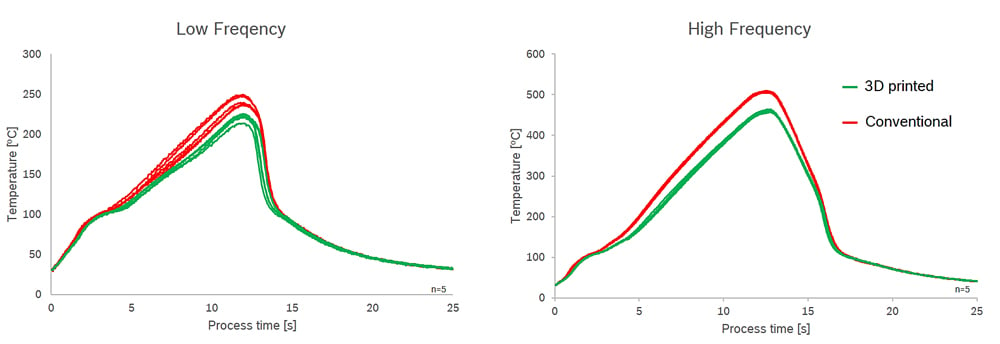
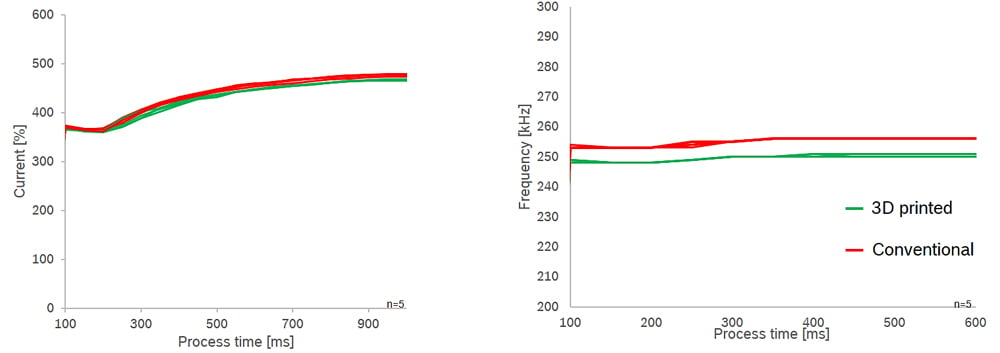 Graphs show differences in the hardening behavior of the conventionally manufactured and 3D printed ring induction coil for different frequencies and energy levels
Graphs show differences in the hardening behavior of the conventionally manufactured and 3D printed ring induction coil for different frequencies and energy levels
The graphs show differences in the hardening behavior of the conventionally manufactured and 3D printed ring induction coil for different frequencies and energy levels.
When comparing the hardening behaviors of the two hairpin coils, the conventional coil demonstrated a greater hardening depth and a higher degree of symmetry. This is related to the amount of concentrator material in the conventional coil, which is higher than the 3D printed hairpin coil.
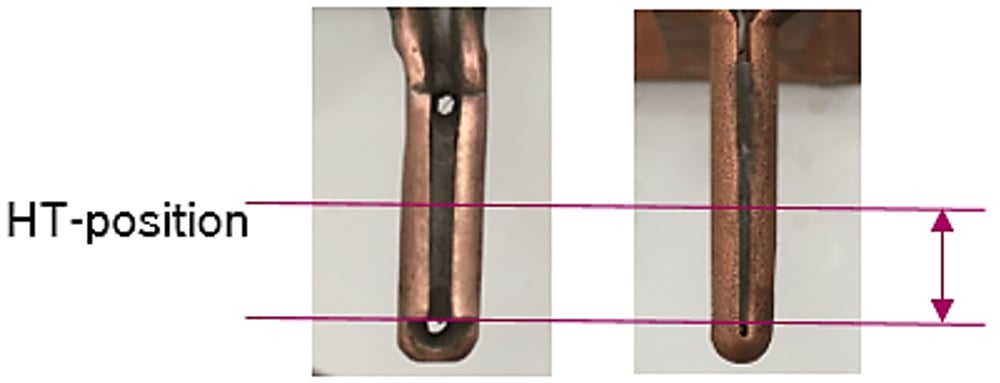 For the challenging hairpin coil geometry with 8mm diameter, the conventionally manufactured coil on the left cannot achieve the same dimensional quality and symmetry as the 3D printed coil on the right
For the challenging hairpin coil geometry with 8mm diameter, the conventionally manufactured coil on the left cannot achieve the same dimensional quality and symmetry as the 3D printed coil on the right
The asymmetry of the coil shape during the hardening process also resulted in a high asymmetric profile. It is essential to point out that this asymmetry occurred because the 3D printed coil’s original design file was slightly asymmetrical in shape. This result can be homogenized by the rotation of the parts.
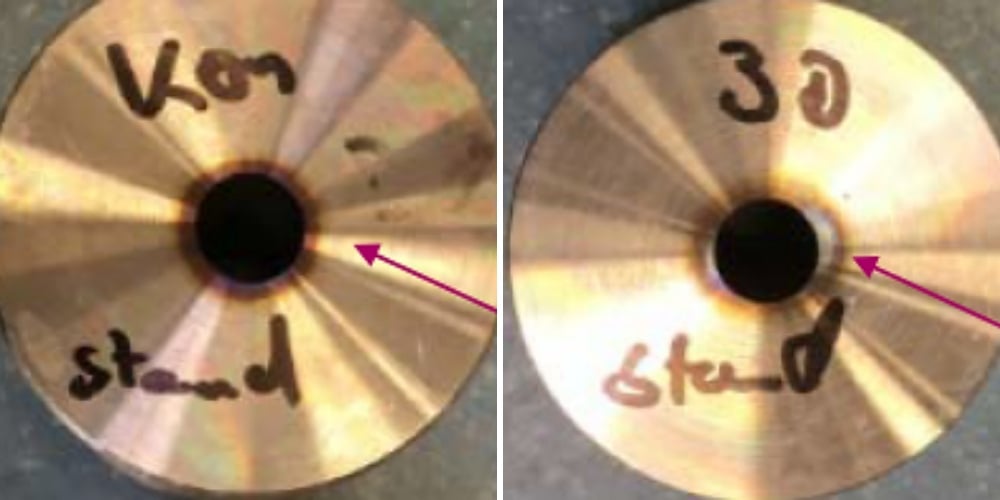 Conventional and 3D printed hairpin coil hardening results without the rotation of the component
Conventional and 3D printed hairpin coil hardening results without the rotation of the component
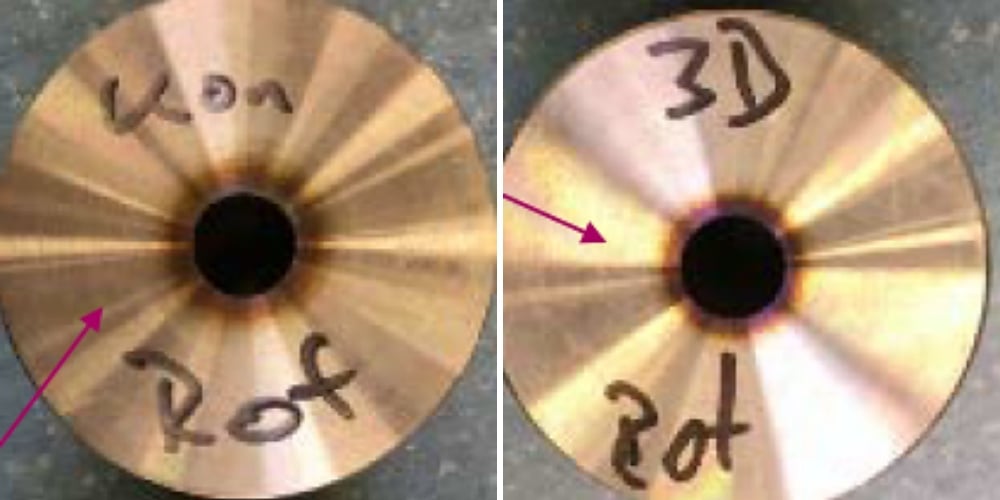 Conventional and 3D printed hairpin coil hardening results with the rotation of the component
Conventional and 3D printed hairpin coil hardening results with the rotation of the component
Outlasting the conventional coil
Testing at this stage was also hindered because the conventional coil was destroyed before the hardening tests were completed. Though results were not conclusive because of this error, it ultimately demonstrated that the 3D printed copper coils were able to match the hardening results of the conventional, pure copper coils.
Despite the conventional coil's destruction, tests were completed using the 3D printed copper coil, which showcased to our customer that this coil can withstand very high temperatures and is superior to conventional coils for high energy applications. The coil was heated during a cycle at different power levels, showing that it reacts well to higher energy input and can achieve high temperatures.

Temperature results achieved by the 3D printed hairpin coil for the high frequency application with 3 different energy input levels
Overwhelming benefits of 3D printed coils
Overall, the results of our customer's induction coil testing prove that our 3D printed coils made from CuCr1Zr are superior to conventional coils in some parameters. Improvements were reported for dimensional accuracy and water flow, demonstrating that 3D printed coils are more predictable and consistent than conventional ones.
The deviations that did occur in the tests were not the result of the 3D printed coil itself, but rather of its design and hardening machine parameters. Both of these factors can easily be adjusted for improved performance results.
Additionally, additive manufacturing could be further exploited by redesigning the induction coils completely. For instance, copper coils could be customized to a unique application, resulting in superior performance and less energy consumption.
Those interested in ordering a 3D printed copper induction coil from GKN Additive can expect rapid delivery times (within 10-15 days) and in-depth support from our skilled product engineering team, including the design of an induction coil 3D model (within five additional days).

